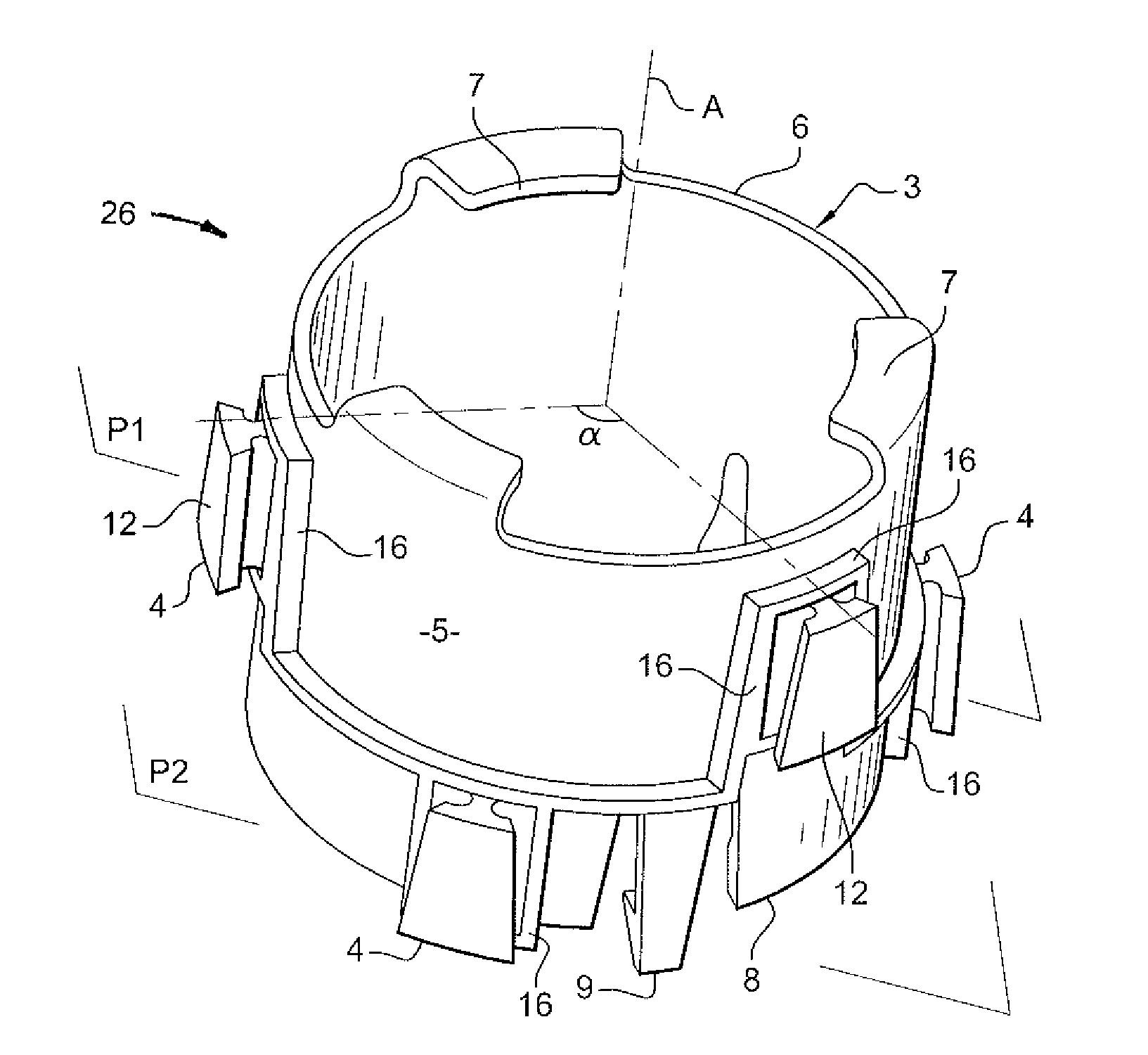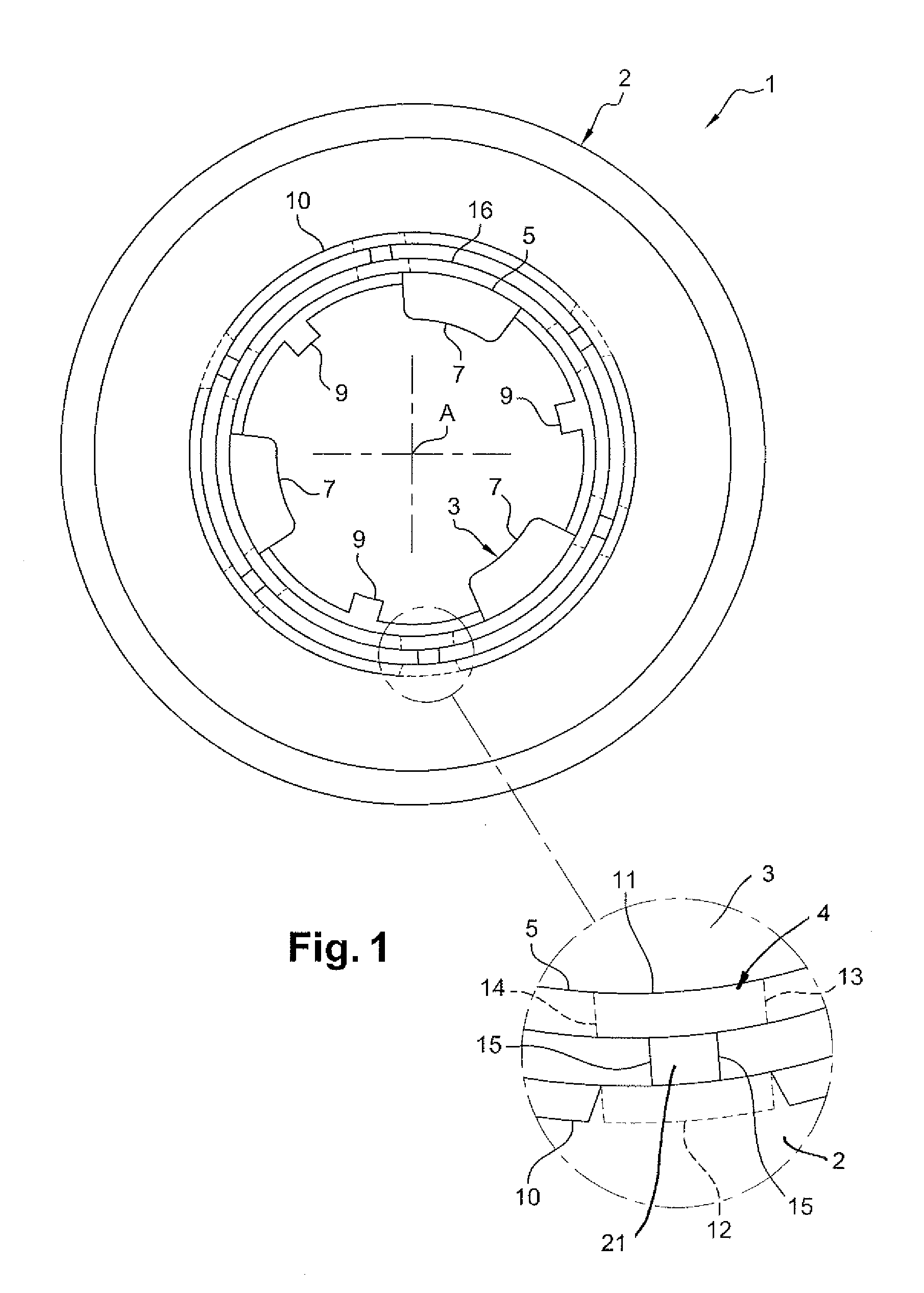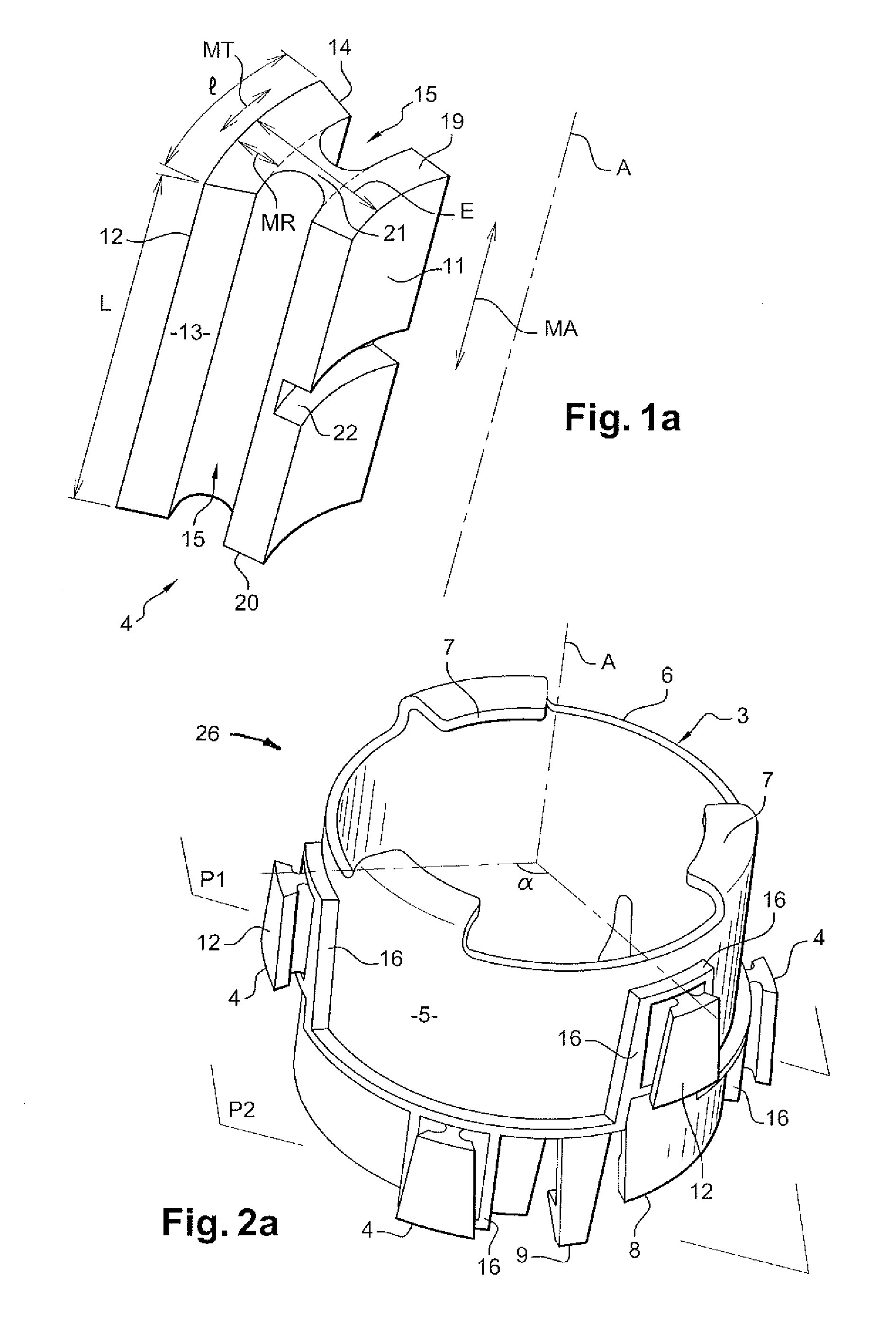Motor support device for heating, ventilation and/or air-conditioning system
a technology for motor vehicles and support devices, which is applied to support/enclose/cases, liquid fuel engine components, portability frames, etc., can solve the problems of unsatisfactory standardization of decoupling, multiple vibrations, and inability to prevent any type of vibration from heating, ventilation and/or air conditioning systems. achieve the effect of improving the situation
- Summary
- Abstract
- Description
- Claims
- Application Information
AI Technical Summary
Benefits of technology
Problems solved by technology
Method used
Image
Examples
first embodiment
[0034]FIG. 1 shows the support device 1 according to a The support device 1 includes a base 2, a ring 3 and decoupling means 4.
[0035]The ring 3 is a hollow cylinder. It extends according to an axis A and is capable of housing a motor with an axis that substantially coincides with axis A of the ring 3. By “extend”, we mean that the length of the cylinder has a direction parallel to that of the axis A. The motor, not shown, causes the rotation, during implementation, of a blower wheel housed in a housing. This blower wheel creates an air flow passing through the heating, ventilation and / or air-conditioning system.
[0036]The ring 3 has a first face 5 that extends according to the axis A. This first face 5 is the external face of the hollow cylinder. A first end 6 of the ring 3 is open and includes three shoulders 7. These shoulders 7 extend the first end 6 in a radial direction with respect to the axis A. A second open end 8, opposite the first end 6, includes three flexible tabs 9. Th...
second embodiment
[0051] the support device 1 substantially as shown is obtained according to a single molding process. First, the ring 3 and the base 2 are formed by molding a first plastic material. Then, the decoupling means 4 are over-molded both on the base 2 and the ring 3. The decoupling means 4 are preferably obtained with a second plastic material, distinct from the first plastic material. In this embodiment, the above-described means for attaching the ring 3 and the base 2 that includes the second sides 12 of the decoupling means 4 slidably received into housings 24 between the housing collars 25 and second face 10 are no longer present, for decoupling means 4 are molded in place relative to both base 2 and ring 3. In addition, the ridges 17 forming a housing 24 entirely surround the second side 12 of the associated decoupling means 4 since it is no longer necessary to insert the decoupling means second side 12 into said housing 24. However, the advantage obtained by the opening of the base...
third embodiment
[0052] the motor support 27 formed by base 2 and hood 18 is made in one piece, obviating the need for the above-discussed means for attaching the base 2 and hood 18 that includes tab 28 and lug 29, but otherwise as shown in FIG. 5. Thus, when the motor is housed in the ring 3 equipped with these decoupling means 4, said decoupling means are inserted into the housings 24 from the base 2 forming a single part with the hood 18. In this embodiment, the performance tests on the motor are performed before the support device 1 is placed on the motor.
PUM
 Login to View More
Login to View More Abstract
Description
Claims
Application Information
 Login to View More
Login to View More - R&D
- Intellectual Property
- Life Sciences
- Materials
- Tech Scout
- Unparalleled Data Quality
- Higher Quality Content
- 60% Fewer Hallucinations
Browse by: Latest US Patents, China's latest patents, Technical Efficacy Thesaurus, Application Domain, Technology Topic, Popular Technical Reports.
© 2025 PatSnap. All rights reserved.Legal|Privacy policy|Modern Slavery Act Transparency Statement|Sitemap|About US| Contact US: help@patsnap.com



